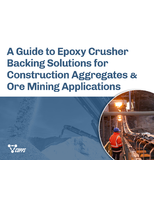Green Building Standard Addenda to reduce heat island effect.
Press Release Summary:
Five proposed addenda to Standard 189.1-2009, Standard for the Design of High-Performance, Green Buildings Except Low-Rise Residential Buildings, are open for public comment. Developed by ASHRAE in conjunction with Illuminating Engineering Society of North America and U.S. Green Building Council, standard provides green building foundation for those who design, build, and operate green buildings. Addendums aim to appease requirements for heat reduction and subsequent energy use.
Original Press Release:
ASHRAE Seeks to Reduce Heat Island Effect through Proposed Changes to Green Building Standard
ATLANTA - Requirements to reduce heat and subsequent energy use on building sites are proposed for the green building standard developed by ASHRAE, IES and USGBC.
Five proposed addenda to Standard 189.1-2009, Standard for the Design of High-Performance, Green Buildings Except Low-Rise Residential Buildings, currently are open for public comment. To learn more or to comment, visit ashrae.org/publicreviews.
Developed by ASHRAE in conjunction with the Illuminating Engineering Society of North America (IES) and the U.S. Green Building Council (USGBC), the standard provides a long-needed green building foundation for those who strive to design, build and operate green buildings.
"Ten years accounts for a wider diversity of trees across geographic regions to achieve a canopy that provides effective shading," Dennis Stanke, committee chair, said. "The current requirement of five years favors fast-growing trees, which may be more likely to lack stability in storms and to die at a relatively young age."
In addition to addendum k, addendum n is open for public comment until June 20, 2011.
Three addenda are open for public comment until June 5, 2011.
"Requirements for pedestrian friendly environments help encourage transit use and support bicycle mobility, both of which increase physical exercise opportunities and associated health benefits," Stanke said.
Standard 189.1 also serves as jurisdictional compliance option to the International Green Construction Code authored by the International Code Council, ASTM International and the American Institute of Architects.
ASHRAE, founded in 1894, is an international organization of some 50,000 persons. ASHRAE fulfills its mission of advancing heating, ventilation, air conditioning and refrigeration to serve humanity and promote a sustainable world through research, standards writing, publishing and continuing education.




